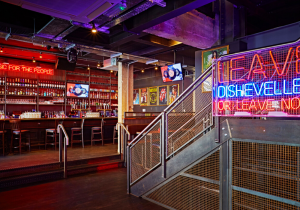‘Looking to get into a Technology Career?’ Q & A with James Wibberley

We caught up with SignStix’s software support specialist, James Wibberley, a master at helping with technical issues and tieing up very important technical projects, to answer questions about his career path and how to break into the tech industry.
Q. What made you pursue a career in technology?
A. Computer games. I’m old enough to remember the era of the BBC, C64 etc. I also remember the 16-bit computers coming along like the ST and Amiga. Suddenly games could look a lot more impressive. But the important thing about these compared to something like a Nintendo console is they don’t just play games.
You can create artwork, write games and programs in a programming language, do work on them etc. After this, the first machines with CD-ROM drives convinced me that multimedia was going to be the future. At first, this was stuff like encyclopedias and games with lots of videos, but the potential was clear.
All of this made me feel that the world was going to head this way, and I thought that work and entertainment would increasingly be digital. I’ve always liked to set up and fix computers, and write programs for them.
Q. What is a typical day like in the life of a software support specialist?
A. Usually, when starting work I will check new emails from clients and colleagues, and check our ticket logging system for new tickets or updates. Often during the day, I will be speaking to our developers for help with issues, or reporting problems to them. Most of our support issues come in by email, but sometimes it will be easier to call clients to explain things or they will call us for a quick answer. A large part of my day is normally picking up new tickets, investigating the issue and then getting back to the client.
Q. Is there a typical day in software support?
A. Never! This is probably the best thing about working in a Software Support position. Every day is varied. It can be anything from database admin, debugging and writing code in various languages, to walking someone through configuring a device over the phone. My days are never the same and they are always interesting.
Q. What advice would you give to somebody looking to start a career in the tech industry?
A. Look into what you like to do on your own initiative. If you like doing graphic design, help out with some of the free websites and software projects that always need art. If you want to get into development, read some of the free online tutorials for programming languages.
After that, find a relatively small problem that you might be able to write something to fix and do it. Find an Open Source project you like and start contributing to it. Get a Raspberry Pi or one of the many “maker boards” now cheaply available and learn how to connect sensors like switches to it, write programs for it that do things like sense when you open or close a door.
Once you’ve done some of this you’ll know whether you want to do this as a career. If you do, at that point start trying to get into a College/University course. The theory they will teach you is invaluable but keep trying to solve little problems and recognise that technology is used differently in the real world than how the theory will tell you.
For the most part in the real world, there is never enough time.
Q. What type of innovations are you currently working on at SignStix?
A. I am working on some interesting projects at the moment, some I cannot mention due to client confidentiality but the ones I can mention are; I’m synchronising screens that are currently playing tracks on a Sonos system in a hospitality venue and I’m also setting up several video walls in various retail stores, it’s always cool to see photos from clients of a finished massive wall of screens.

I have worked on the FNAC video wall installations, which is a large retail chain in The Netherlands, with stores in places like Ghent and Luxembourg. The screens I worked on for them are huge video walls in the stairwell of stores, and single screens around stores showing promotions.

I’m also working on screens behind reception desks and in communal areas of student accommodation, which are designed to look pretty cool. Student accommodation seems a lot nicer than when I went to uni!
For both of these, I have had to get the video wall working correctly, usually talking to engineers on-site to make sure they look right. I have also had to work on content for these, often videos need to be resized into the correct format and uploaded into Signstix Director.
This can also involve troubleshooting if the content doesn’t display correctly. Once the installation is done, I will occasionally have to help with scheduling changes to content displaying on these screens as Signstix can automatically display different content at different times and dates.
Q. Where do you see the future of the tech industry going?
A. Even more online services. Eventually, just about everything we use will be digital and online. Screens used everywhere will become a higher resolution. With gigabit (and faster!) connections becoming more common, maybe you won’t even need a hard drive on your phone/on your computer in the near future. 4K video calling should become widely used soon, along with streaming at very high resolutions.
I also see that younger generations don’t necessarily like the data collection activities of large companies like Facebook and Google. We might see them moving away from the current traditional tech behemoths. I’ve heard it said that in technology the only constant changes. Don’t have any “sacred cows” (ie: beliefs that you can never change) in regards to technology.
Over the course of one person’s career, almost everything will change. Try not to get stuck doing one thing, always have a mindset open to doing things in different ways, and accept the new ways technology is evolving and being used.
Has James inspired you to want to further a career in tech than these 10 Steps to a Tech Career may help?
Check our careers page for current job opportunities.
